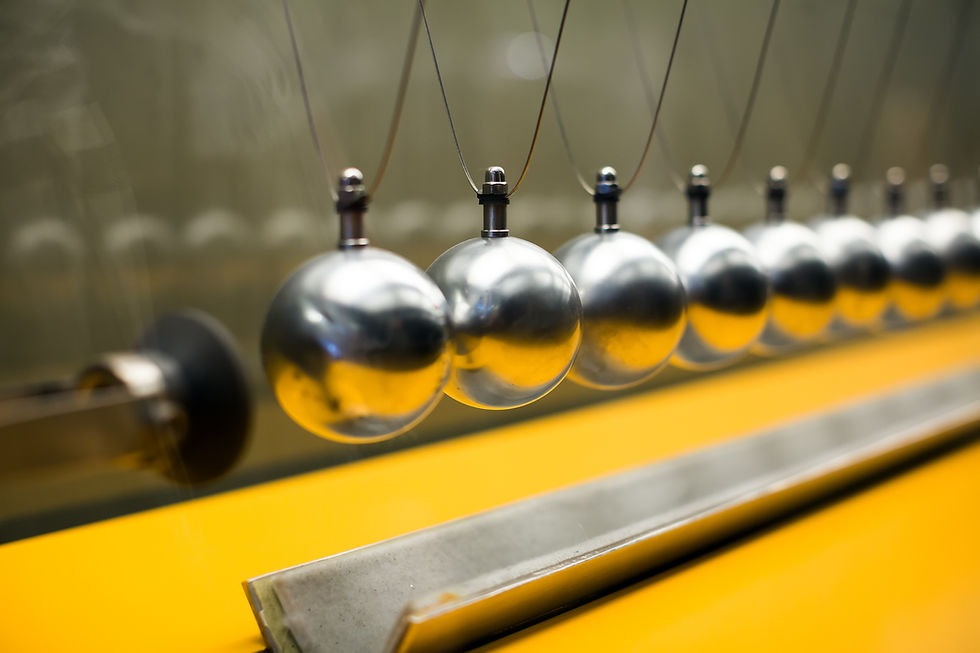The Role of the Appendix in Parkinson's Disease
- Madelle Dela Costa
- Mar 23, 2021
- 2 min read
Updated: Mar 25, 2021

Eradicating the appendix right off the bat in life decreases the danger of developing
Parkinson's disease by 19 to 25 percent, an investigation elucidated in Science
Translational Medicine. Parkinson's disease, a degenerative neurological turmoil that
incapacitates brain cells and causes movement issues, could have its beginnings in the
appendix. As specialists explicate, the vestigial organ could be the foundation of proteins
that can ascertain their way to the cerebrum and expand a dangerous grasp on nerve
cells.
Viviane Labrie, Ph.D., an associate teacher at Van Andel Research Institute (VARI)
and a senior creator of the examination stated that regardless of having a reputation as
largely unnecessary, the appendix has a noteworthy influence on the immune system, controlling the construction of the gut bacteria and now, as appeared by the examination,
in Parkinson's disease
Investigations elucidate that the reduced hazard for Parkinson's is only apparent
when the appendix and the alpha-synuclein contained inside it is ejected early in life,
years before the onset of Parkinson's. Accordingly, the appendix might be engaged with
infection commencement. However, removing it after the disease begins, has no impact
on illness progression.
In a general population, individuals who had an appendectomy were 19 percent
less inclined to develop Parkinson's. This impact was amplified in individuals who live in
rural areas, with appendectomies conveying about a 25 percent reduction in disease risk.
Parkinson's frequently is more common in the rural population, a trend that has been
associated with enlarged exposure to pesticides.
The investigation likewise validated that appendectomy can postpone infection
progression in individuals who developed Parkinson's, pushing back diagnosis by an
average of 3.6 years. Since there are no conclusive tests for Parkinson's, individuals are
diagnosed with motor symptoms. For instance, tremor or rigidity arises. Following this,
the disease typically is quite advanced, with critical damage to the zone of the brain,
which manages deliberate movement.
Conversely, appendectomies had no clear advantage in individuals whose disease
was connected to genetic mutations passed down through their families, a group that
comprises fewer than 10 percent of cases.
All things considered, the discoveries do not mean individuals should run out and
plan appendectomies. Parkinson's itself is a relatively rare disease that influences under
1 percent of the populace.
“One of the things that we don't want to get across to people is that [they] should
be having preventative appendectomies or that just because you have an appendix,
you're going to get Parkinson's disease,” Labrie said. Rather, she asserted that possible
future preventative treatments could aim to target levels of the clumped proteins in the
gut or to somehow prevent their escape to the brain.
“In addition, the researchers only looked at the appendix in this study, but there
could be other places in the GI tract that also have these clumps that we just haven't
looked at yet,” Labrie said.
Presently, Labrie plans to comprehend the molecular basis of what is happening –
if these clumps of proteins cannot distinguish a healthy appendix from one that may seed
Parkinson's, are there other biological markers that can?
In essence, the gut whispers to the mind while the mind whispers to the gut.
Together, these turn the wrenches and wheels of the body — a discussion that keeps on
remaining to a great extent puzzling to us.
Sources
Sevick, K. “Seeds of Parkinson’s disease may hide in the appendix.” Science, 31 October
2018. https://www.sciencemag.org/news/2018/10/seeds-parkinson-s-disease-may-
hide-appendix
Van Andel Research Institute. "Appendix identified as a potential starting point for
Parkinson's disease: Appendix acts as a reservoir for disease-associated proteins;
appendectomy lowers the risk of developing Parkinson's." ScienceDaily, 31 October
2018. www.sciencedaily.com/releases/2018/10/181031141606.htm



Comments